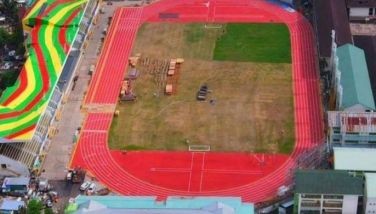Cebuano theater scenes
Today is the last Saturday of the National Arts Month. A month that is purportedly packed with various art activities that call for greater audience recognition, participation and appreciation. And I would like to opt a topic that I have involved in for decades—the Cebuano theater.
First and foremost, the Cebuano theater now is a far cry from what we had in the past. My very good friend from the National Commission for Culture and the Arts, Lutgardo Labad, former head of the Dramatic Arts Committee, urged the revival of ''the golden days'' of Cebuano theater. He observed that of late, Cebu has not been active in theater but too focused in creating festivals with Sinulog as the mega-model in the promotion of cultural tourism. While street dancing is good for cultural preservation and awareness, drama offers characterization which provides a deeper understanding of history and the struggle of local heroes.
Local cultural historians trace Cebuano theater to have had several golden ages. Playwrights of the "golden period" of Cebuano theater from 1900 to 1930 included Buenaventura Rodriguez, Piux Kabahar, Florentino Borromeo, Celestino Rodriguez, Vicente Alcoseba, and Alberto Ylaya. Composers, actors and theater artists included Sabas Veloso, Sebastian Lignatong, Antonio Kiyamko, Eulalia Hernandez, Concepcion Cananea, Manuel Velez, Isabelo and Jose Rosales.
Plays were staged in makeshift, open-air stages, cockpits, warehouses and city playhouses. There were also attempts to organize theater artists into professional groups, the earliest attempt perhaps being Vicente Sotto's Compania de Aficionados Filipinos in 1902. Cebuano theater artists also played an important role in early attempts in the prewar period to produce Cebuano movies. Golden years were also experienced in 1950s and shone again in the 1970s. These golden ages saw the rise of ''great'' Cebuano movie actors such as Matt Ranillo, Gloria Sevilla, Caridad Sanchez, and Rebecca Torres, among others.
Today, Cebuano theater has become a sporadic activity, kept minimally alive by school-based and other theater groups. It can also be experienced in terms of sparse visits by out-of-town dramatic troupes. For the present generation, however, you wouldn't know the difference.
Producing and directing Cebuano plays in school has always been a challenge. Finding a good material is a constant colossal trial. Mounting theater productions in Cebuano is rarely given attention. When was the last time we have watched plays using Cebuano language? Years back, the UPSTAGE (University of the Philippines Students' Theater Arts Guild for Education), the longest running performing group (36 years) staged "Ang Tawo", a Cebuano translation of "Everyman". "Ang Papeles", "Sa Ngalan sa Amahan", "Sul-og sa Gugma" in collaboration with Rudy Aviles and Orland Magno were staged at SM Cinema 1. "Ang Lingkuranan" by Al Evangelio staged at the UP Cebu Conference Hall. Though small productions were mounted in the campus, most of the materials were written in English and Tagalog by Filipino playwrights, I translated them into Cebuano. Other productions by Madame Delia Villacastin and Monsignor Rudy Villanueva like "Mini" and "Rosas Pandan" by Jaime Allan Rabaya were staged and restaged.
We have very few local play productions these days and very seldom is there an original Cebuano play. Often it's the same poor imitation of Broadway hits over and over. And I even wonder why established local theater groups and production outfits continue to patronize and show plays mainly from Manila, staged either in English or in Tagalog.
The dearth of Cebuano materials for plays owes to the fact that very few and lopsided initiatives were undertaken in the past and even until now in conducting workshops and trainings on Cebuano playwriting. Local literary groups and even literary books seem to focus on Cebuano poetry and short stories. A clear indication is the absence of Cebuano playwriting category in the annual Carlos Palanca Memorial Awards for Literature. For now, under regional languages, it has only one category, short story. Inclusion of playwriting would encourage local playwrights to come up with good Cebuano theater materials.
There is so much to be done to bring back the glory of the Cebuano theater. And it requires a concerted effort, dedication and commitment among local theater artists. But most importantly, let's redirect our attention to using our very own Cebuano language. For our young, let's instill, promote and appreciate the importance of our very core. Let's rekindle the love for our local language.
- Latest






















